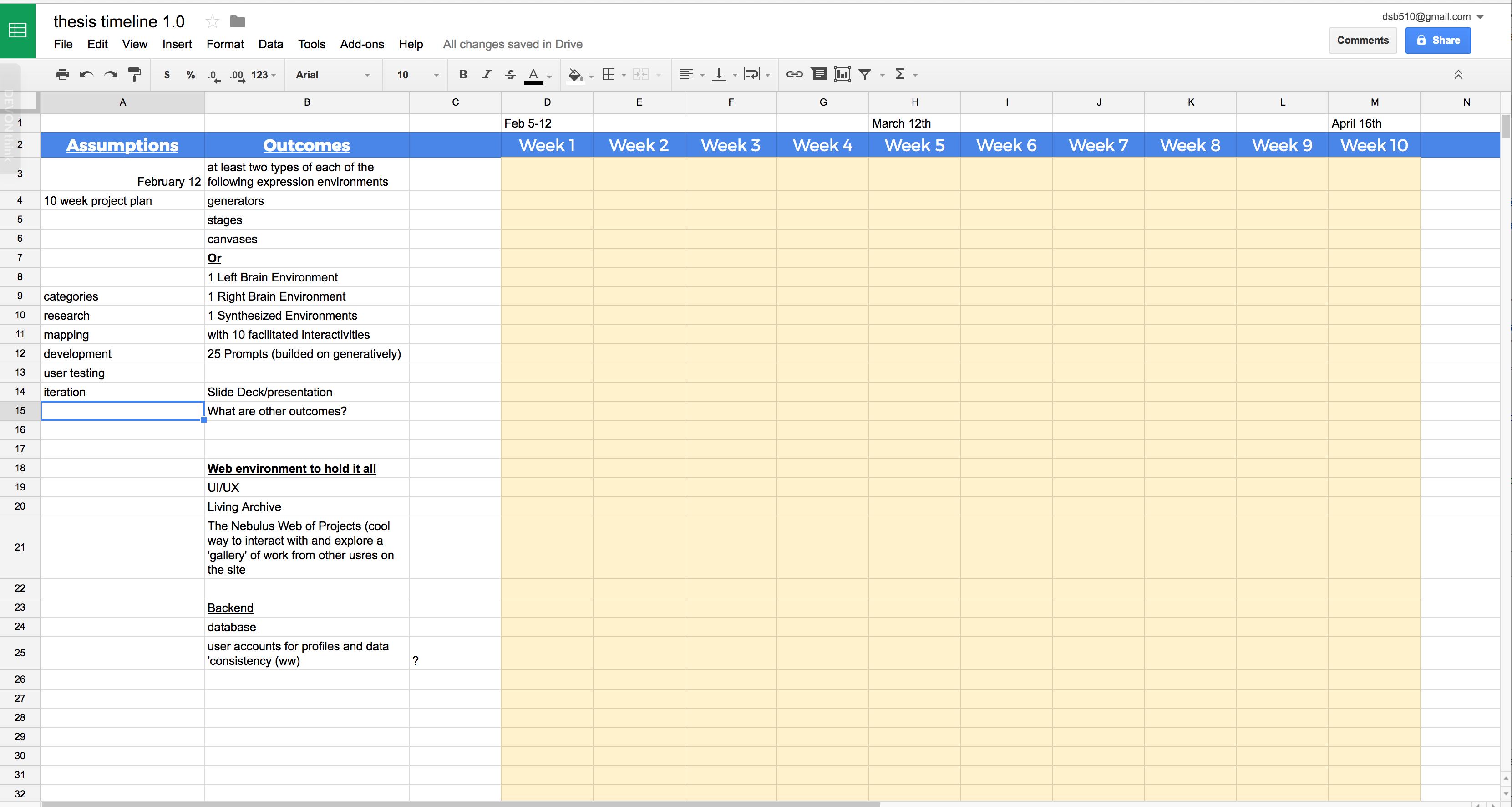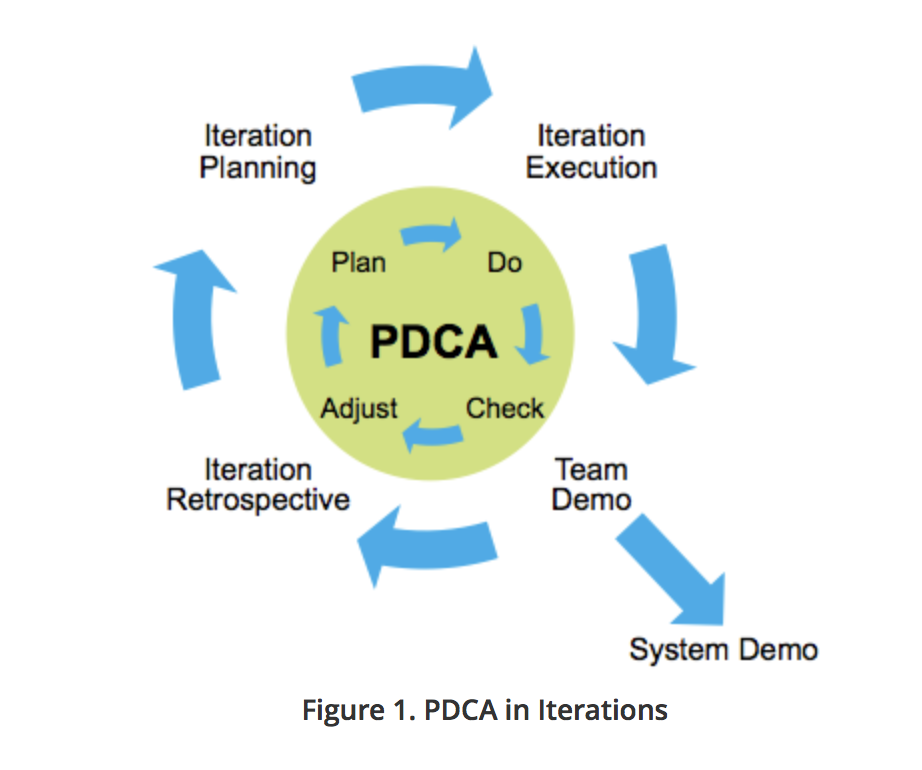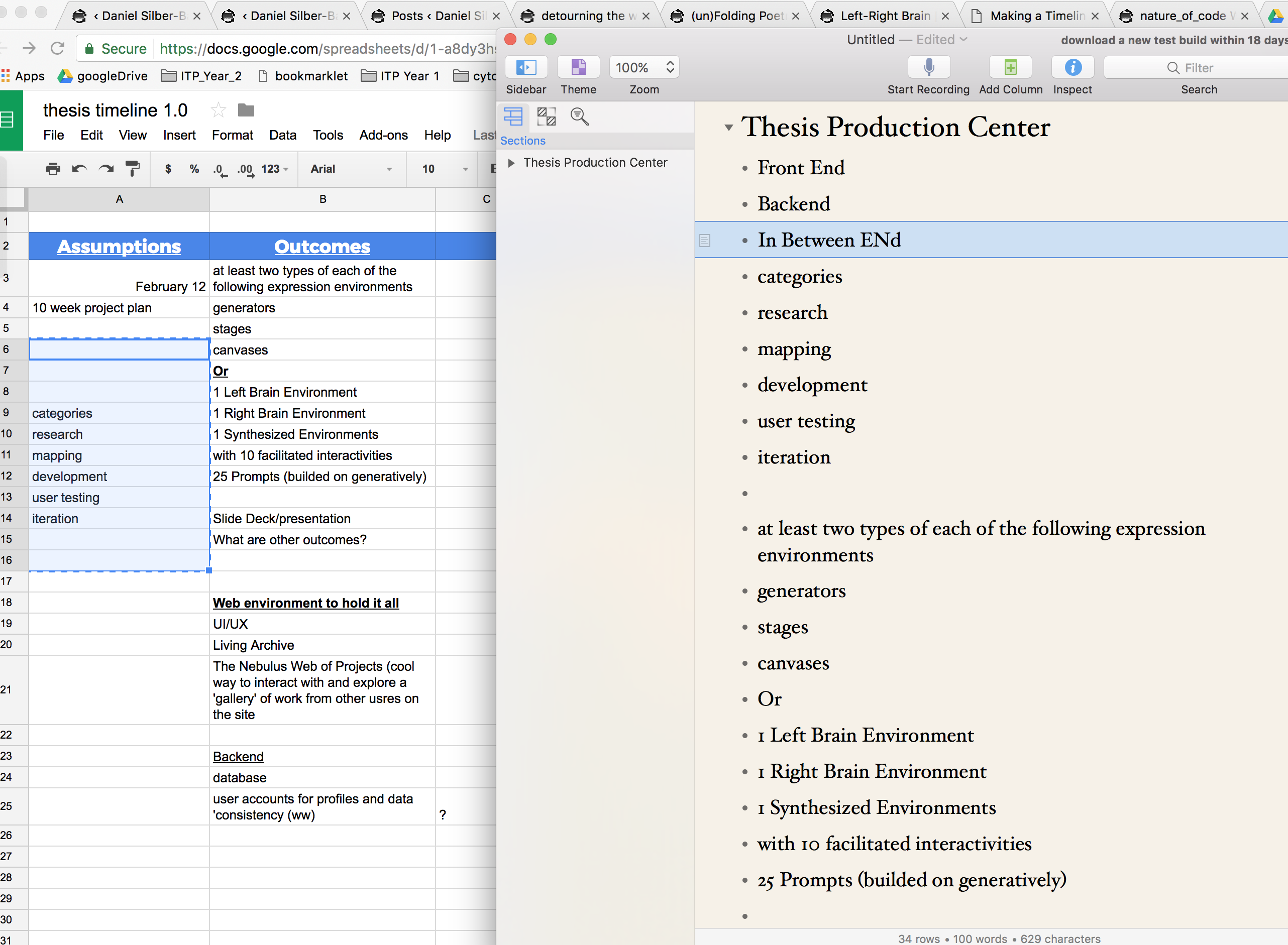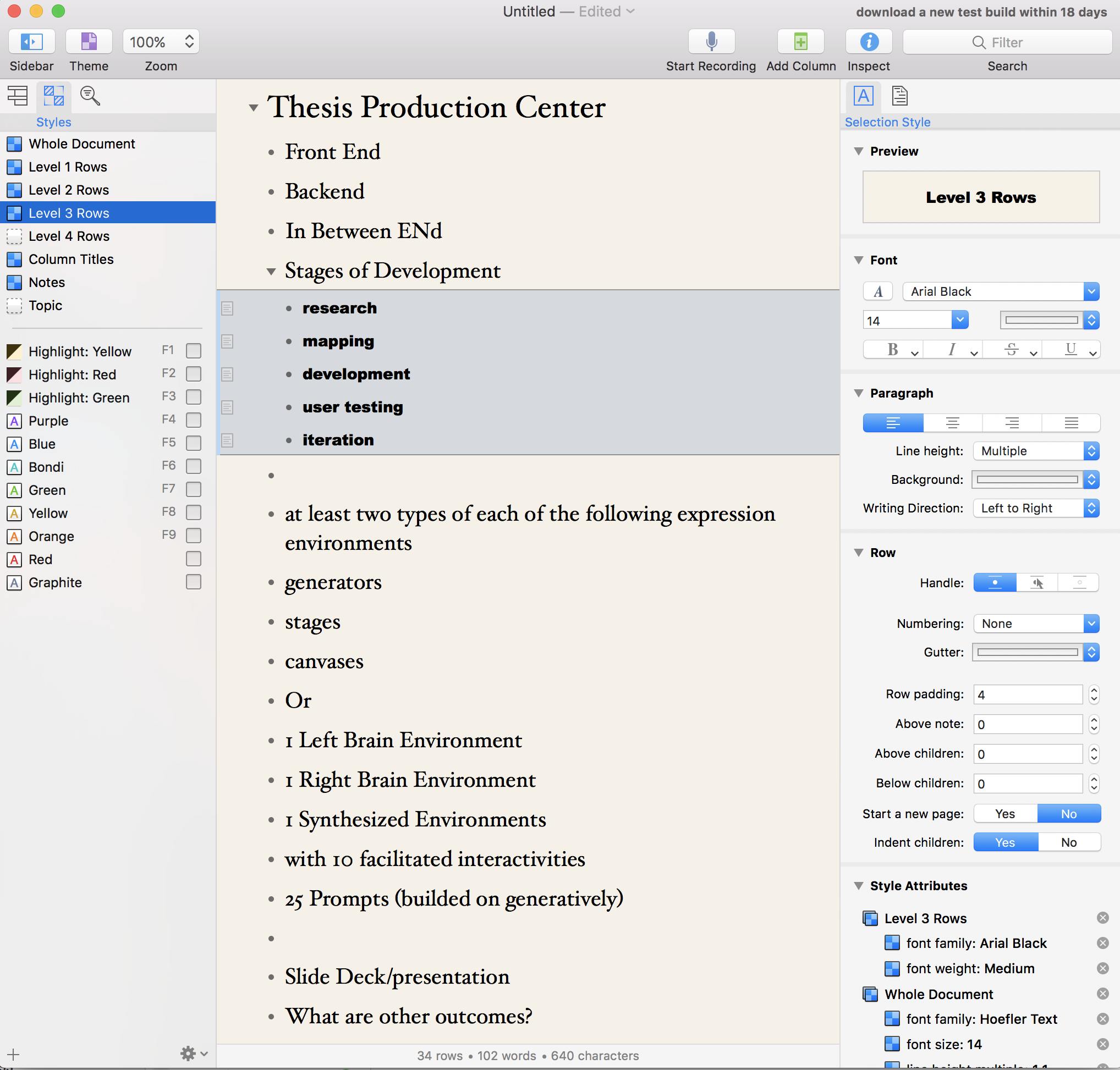I am realizing that there is a dangerous catch-22 afoot. The idea of trying to scope the entire idea of my thesis into something as concrete and restrictive as a timeline, feels far too overwhelming…which is in fact, exactly why I need to make a timeline.
My first step was to try and dump everything from my mind to a digital space I could view and organize. So I made this google sheets as a 1.0. I started by laying out the weeks we have to finish our projects, as well as any assumptions I was making about the process, and then I brainstormed a list of outcomes, trying to think about when my projec t was fnishied what would have been done and produced. I eventually would like to have a timeline in an environment that is optimized for this kind of effectivness, such as OmniPlan or a grantt chart possibly. I find google sheets to be a good first space to get lots of ideas of different kinds down in one place to view.

Next I decided to look into some methodologies for software design and design thinking to get some ideas for the next steps in organizing my timeline, in terms of defining my outcomes, and finding some more structures for understanding and completing my outcomes for this project.
Systems for the Creative and Production Process
The process of design thinking
Inspiration, Ideation, and Implementation
Inspiration-
Generally, the design process starts with the inspiration phase, in which the previous step is the definition of the brief. The brief is a set of mental constraints that gives the project team a framework from which to begin, benchmarks by which they can measure progress, and a set of objectives to be realized—such as price point, available technology, and market segment. Designer approach to users with empathy, understanding what human need or might need, what makes life easier and more enjoyable, what is technology useful and more usable.
Ideation-
Ideate is the mode of the design process in which you concentrate on idea generation. Mentally it represents a process of “going wide” in terms of concepts and outcomes. The process is characterized by the alternation of divergent and convergent thinking, typical of design thinking process.
Implementation-
The third space of the design thinking process is implementation, when the best ideas generated during ideation are turned into a concrete, fully conceived action plan.[26] At the core of the implementation process is prototyping: turning ideas into actual products and services that are then tested, iterated, and refined. A prototype helps to gather feedbacks and improve the idea. Prototypes speed up the process of innovation because allow to understand strengths and weaknesses of new solutions.
Software Development Process
Iteration and Agile Development


The idea will be to create some high level projects that need to be completed in order for my thesis to be finished. And then to break those preojects up into sets of subtasks. And then to populate the development processes for those projects made up of tasks, across a 10 week timeline. And then to create an environment where the timeline can be ‘living,’ in that it can both set the path, and be adjusted by the path towards productions
